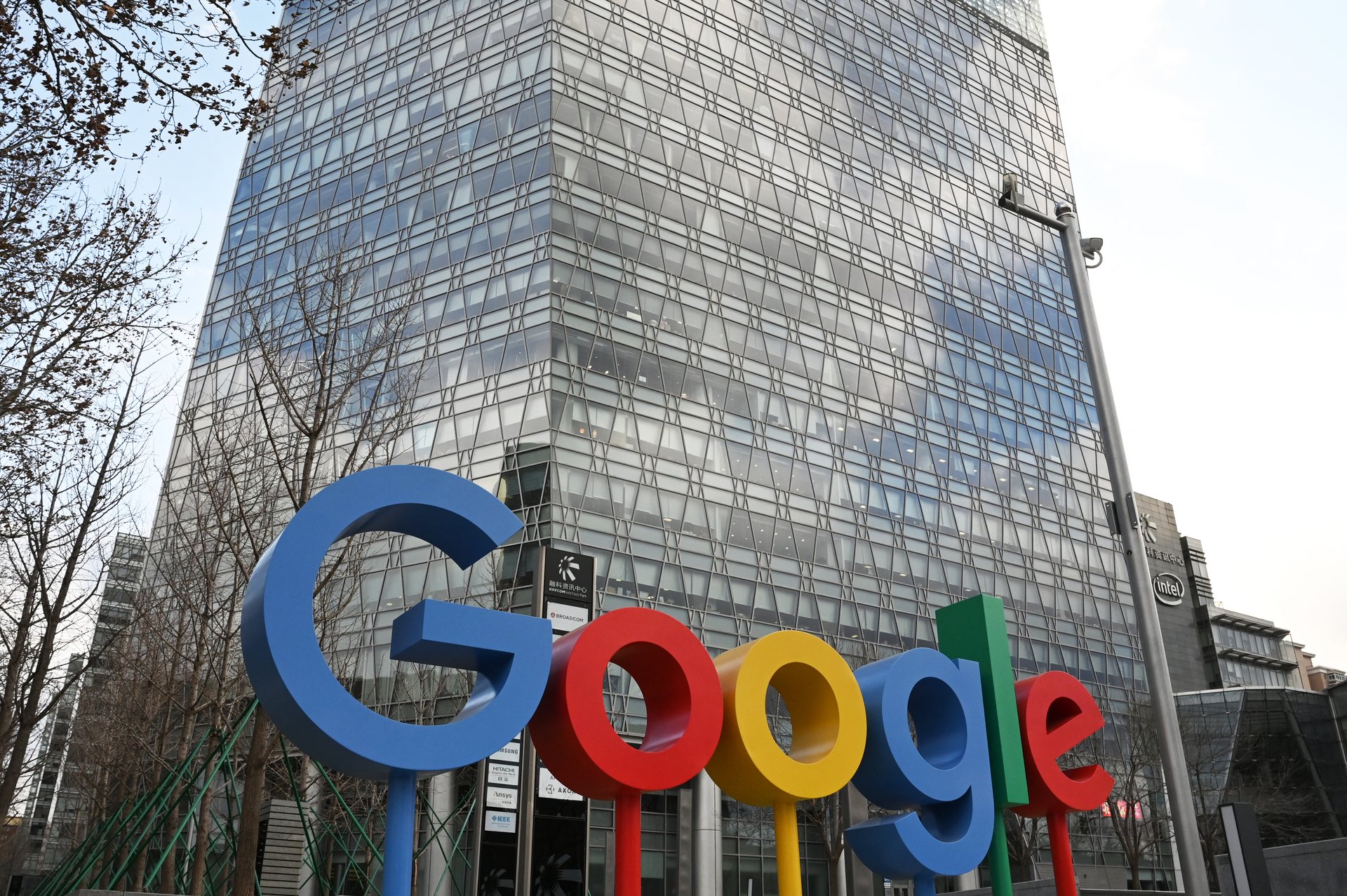🌍 Google’s biggest threat
Plus: Apple’s quiet AI shift.

(Photo by Greg Baker/AFP via Getty Images)
Good morning, Quartz readers!
Suggested Reading
Here’s what you need to know
Blurred trade lines. The U.S. and China may have reached a trade deal — or, at least, a trade framework — according to the president, but details are scarce.
Related Content
China’s miner threat. China is reportedly leveraging a valuable asset in trade talks, subjecting U.S. companies to a six-month limit on rare earth minerals.
Cooler heads. Data from May’s CPI report showed that inflation cooled as the effects of the Trump administration’s tariffs remain limited — but the data was still below expectations.
No love for the Fed. President Donald Trump and Vice President JD Vance both bashed the central bank for not cutting interest rates amid the softening inflation data.
Banking on a bad turn? JPMorgan Chase CEO Jamie Dimon said he’s worried the economy could “deteriorate” soon — with employment coming down and inflation going up.
Takes two to tango. The feud between Trump and Elon Musk can be traced to… Argentina? Recently, the Latin American country has served as a far-right laboratory.
Google’s search and rescue mission
As the DOJ’s landmark antitrust case against Google nears a ruling, the company’s core search business is under threat — from regulators, yes, but perhaps more so from user behavior. Vineet Jain, CEO of Egnyte, recently ditched Google Search for four days and didn’t look back. His teenage son put it more bluntly: “We don’t use Google anymore. We use ChatGPT.”
It’s not just teen rebellion. Tools such as ChatGPT and Perplexity are chipping away at traditional search by skipping the blue links and delivering answers directly. According to a report from Mary Meeker, ChatGPT reached a billion daily queries in under two years — Google took over a decade. That shift threatens Google’s most valuable asset: not its algorithm, but its default status. In 2022, the company paid Apple over $20 billion to be the preset engine on Safari.
That’s what’s on trial. Judge Amit Mehta is weighing whether those exclusive distribution deals violate antitrust law. But even if Google prevails, its business model may still be on the clock. The ad revenue engine — $50.7 billion last quarter alone — relies on default-driven, high-intent search traffic. As users drift toward cleaner, ad-free AI alternatives, the foundation begins to wobble.
Google has tried to respond with AI Overviews and its Gemini suite, but the strategy is caught in a paradox: serve direct answers, but keep users clicking to monetize attention. It’s a far harder act than it sounds — especially when rivals aren’t bound by the same ad-based incentives.
The courts may not force a reckoning, but the market might. As generative AI redefines what search even means, Google’s greatest challenge may be navigating a future that no longer revolves around it. Quartz’s Shannon Carroll has more on why the real risk to Google isn’t legal — it’s behavioral.
Apple’s “Liquid Glass” ceiling?
Apple didn’t go especially big at this year’s WWDC. Instead, the company debuted “Liquid Glass,” a design language for iOS that sparked comparisons — charitable and not — to Windows Vista. Apple’s AI announcements, meanwhile, underwhelmed Wall Street. One analyst dubbed them “incremental at best.”
But the most consequential news may have arrived with little fanfare: Apple quietly opened up its Foundation Models framework to developers.
For the first time, Apple is giving third-party developers access to its on-device large language models — with as few as three lines of code. This marks a major shift for a company that has long guarded its core technologies like trade secrets. It could also change the AI playing field.
While Apple’s in-house models trail others in scale, the company’s strategy isn’t about being first — it’s about being everywhere. With a billion active iPhones and a robust developer ecosystem, Apple may be betting that its modest models, embedded across its vast hardware base, can deliver utility through sheer distribution. If developers build compelling features atop Apple’s tools, the company won’t need to outpace OpenAI — it just needs to outlast it.
The strategy is familiar. Apple didn’t invent smartphones, tablets, or watches — but it may have perfected them. By enabling AI at scale across its devices, Apple might not just catch up in AI, it could reframe the category entirely. Quartz’s Jackie Snow has more on the strategy behind the subdued keynote.